How to Travel Around South Africa
How to Travel Around South Africa
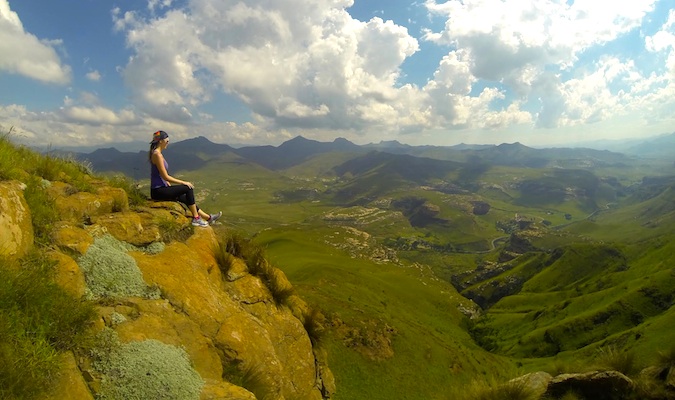
Last Updated: 7/2/20 | July 2nd, 2020
Every month, Kristin Addis from Be My Travel Muse writes a guest column featuring tips and advice on solo female travel. It’s an important topic I can’t adequately cover, so I brought in an expert to share her advice. This week, she shares her advice on traveling South Africa.
When I started planning my South Africa trip, a lot of questions went through my mind:
Is a country that big easy to travel around?
Is it expensive?
The resources I found online were vague, negative, or simply nonexistent. I’d have to either cancel my trip or dive in and figure it all out for myself.
I chose the latter.
After traveling through the country for close to two months, I discovered a wide variety of reasonably affordable ways to navigate South Africa safely and easily.
To help you do the same, here’s my breakdown on how to get around South Africa on a budget:
By Bus
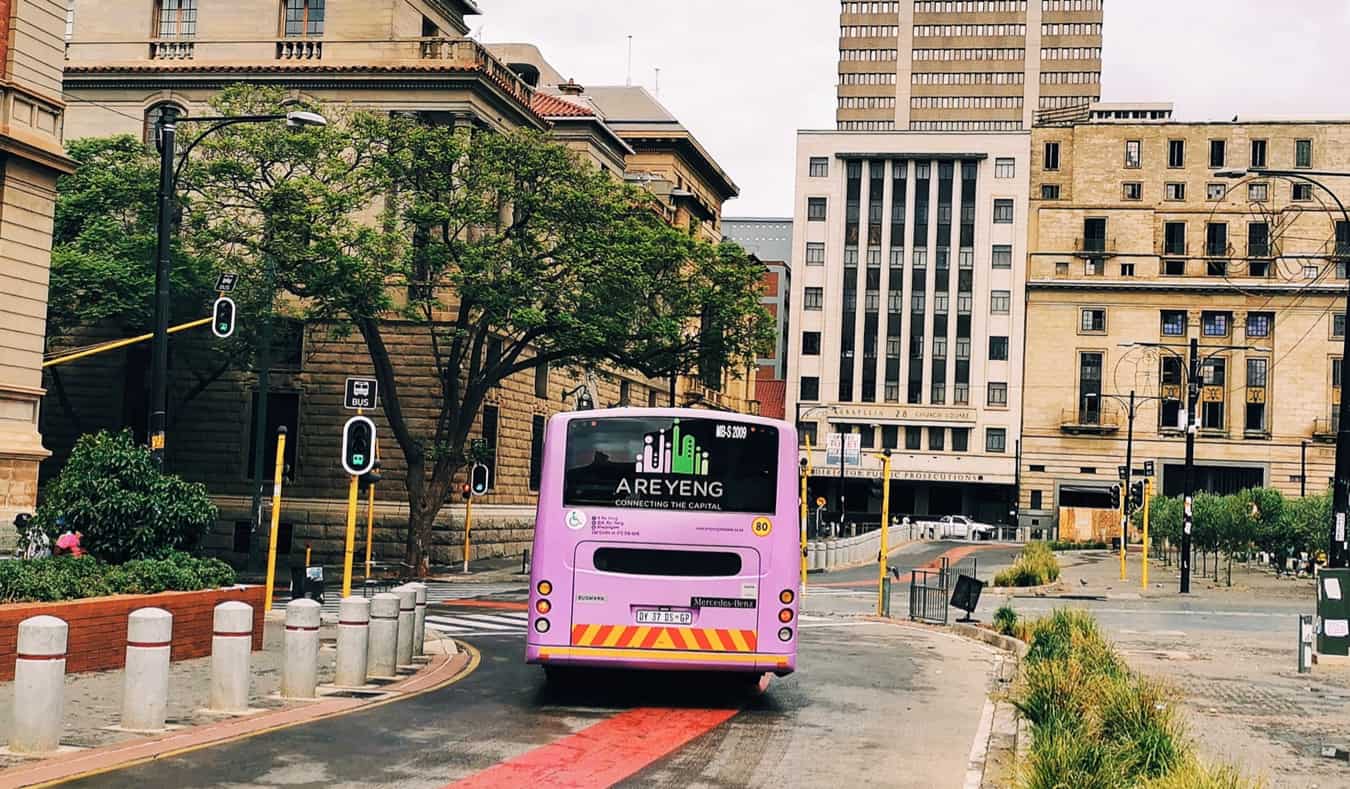
There are several companies that run in the country including Greyhound, Intercape, and Baz Bus (which caters specifically to backpackers).
Baz Bus runs a route from Johannesburg to Cape Town (or vice versa) with several stops along the way. You can hop on or off whenever you want and can begin your trip anywhere, but as those two cities have major airports, most people start in one or the other.
(Matt says: I’ve taken similar buses in New Zealand and Australia. They can be good for people who want to meet other travelers.)
The most popular Baz Bus option is the unlimited one-way hop-on/hop-off pass. It costs 6,900 ZAR ($399 USD) and covers the 1,400km distance between Johannesburg and Cape Town. You have no time limit and have unlimited travel in one direction, allowing you to have as many stops as you want. A return pass costs 10,350 ZAR ($598 USD)
Baz Bus is not a big money saver, as the fares are more than the train and other bus companies, but it is a convenient option for those who are happy to travel along the popular routes and meet other backpackers. The route includes the big cities in South Africa, the famous Drakensberg mountain range, popular spots along the coast, and the famous Garden Route in the Western Cape.
The drawbacks to taking the bus include dealing with a lack of transport once you’re at your destination, though shuttles to various local attractions, such as the bungee jump in Wilderness, are sometimes available at an additional cost. You’ll also need to be flexible with your schedule since the shuttles don’t run every day.
The biggest drawback for me was that the buses run along one set route and only go to the most popular tourist destinations, and drop off only at certain backpacker accommodations. So, for those who like to head off the beaten path, it’s not a great option.
For comparison, a Greyhound or Intercape bus from Johannesburg to Cape Town will cost around 575-1,000 ZAR ($33-57 USD) each way. The journey is around 18-20 hours. The buses are large, air-conditioned, comfortable, and filled with locals, not backpackers.
Be sure to bring along snacks (and water) as well as some entertainment, as the buses run on a tight schedule and most stops are very brief, if they happen at all.
During the high season (December and June through August), you should book ahead as buses fill up quickly.
By Air
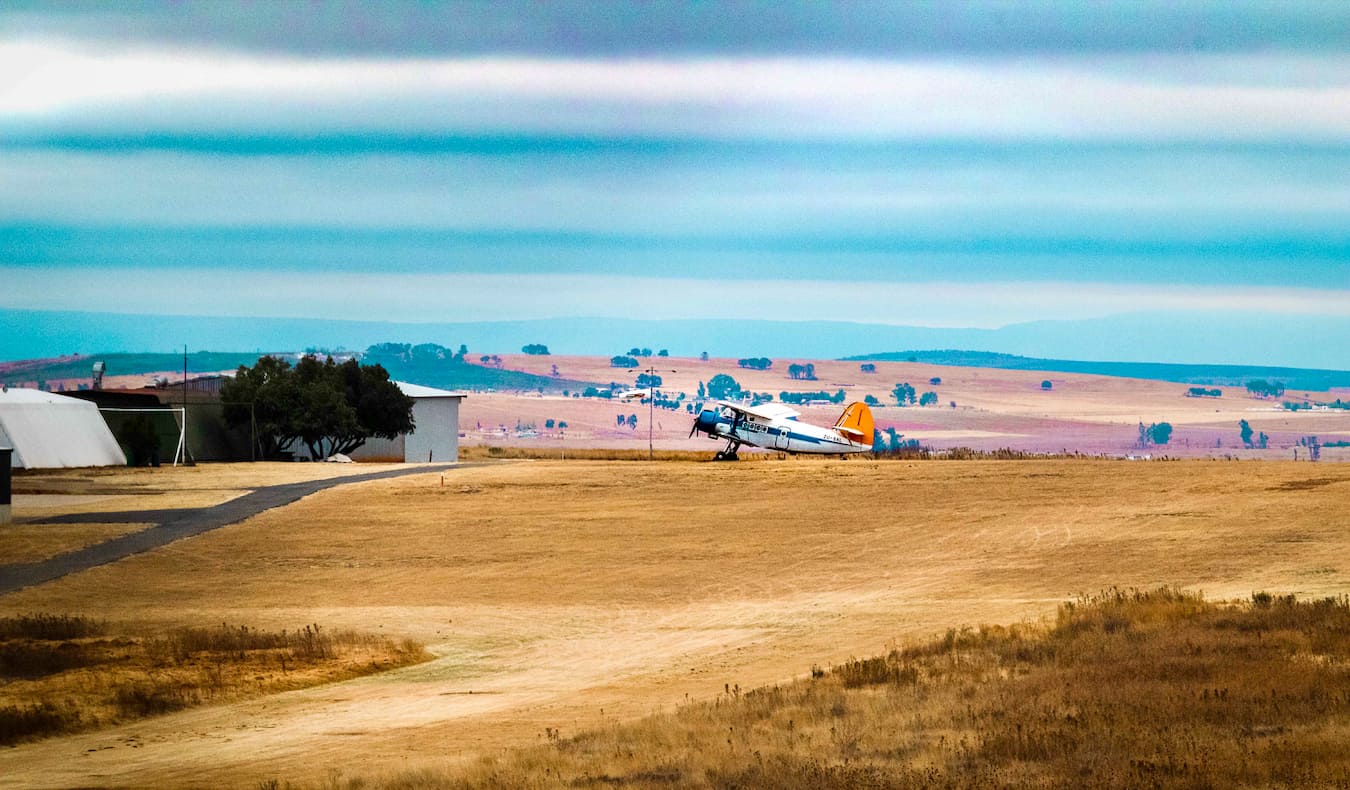
Flying around South Africa isn’t that expensive. Budget Airlines like Mango and Kulula serve all major — and even minor — airports in the country with several flights per day. They are easily booked online using any major credit card. For example, a return ticket from Johannesburg to Durban is only 870 ZAR ($50 USD).
Even last-minute flights, as long as they still have quite a few seats left, tend not to go up in price if it’s a major route. For a last-minute planner like me, that was a real treat! For less common routes or smaller airports, prices go up the closer the date is.
Unsurprisingly, inconvenient times and early morning flights tend to be the cheapest. As with most budget airlines the world over, checked baggage and meals onboard cost extra.
While flying is probably the cheapest option, it’s also the least sustainable. And, when you factor in getting to and from each airport you don’t end up saving a huge amount of time if you’re just traveling a short distance.
However, if you’re on a tight schedule then flying is probably your most budget-friendly option.
By Car
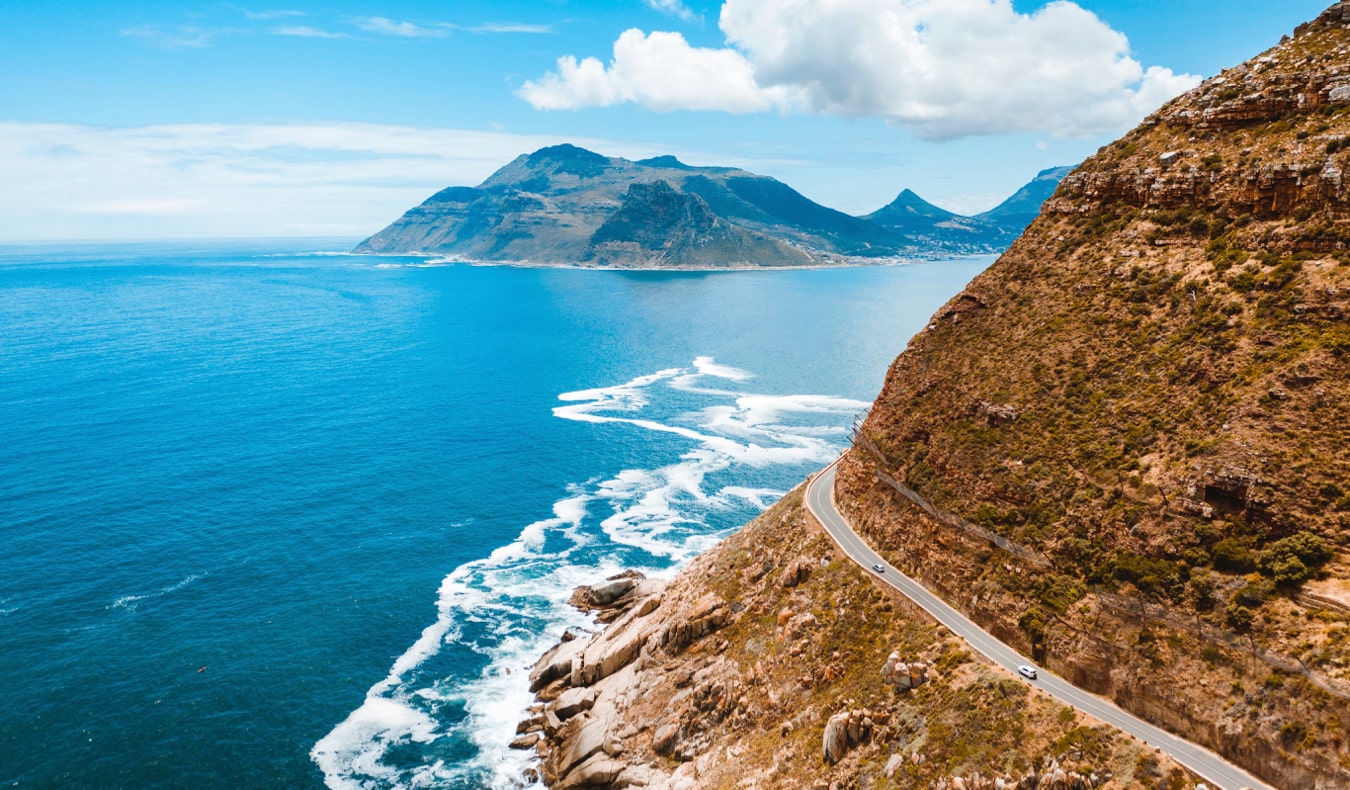
When I told my friends I was planning to drive solo through South Africa, they immediately tried to talk me out of it, envisioning dangerous roads, thieves, and no one to help should something go wrong.
In truth, road-tripping through South Africa is not much of a problem at all, as other cars are passing by all the time should a breakdown occur, and South Africans are incredibly friendly and helpful.
That’s not to say driving in South Africa is without risk. There are carjackings from time to time, and break-ins are common. But being aware of this and taking precautions to keep valuables hidden and doors locked greatly reduces the risks.
Renting a car is the most convenient way to get around since you can get to many out-of-the-way parks, cities, and destinations. If you would rather not travel alone but still want to rent a car, post on travel forums such as:
Additionally, ask around hostels as there are usually people looking (or offering) rides (I found my partner in crime through a friend of mine). Not only will you get to meet new people but you’ll be able to split the gas costs, saving your money.
I rented a Volkswagon Vevo, which we booked online and picked up in person. The price worked out to be 4,350 ZAR ($250 USD) for two weeks, including gas, the fee for dropping off in a different city than we rented in (we picked the car up in Johannesburg and dropped it off in Cape Town), and insurance.
During my trip, gas cost around 17 ZAR ($1 USD) per liter. As of 2020, it’s closer to 13 ZAR (.75 USD) per liter. If you choose a smaller car, mileage can be quite good. To keep costs low, we also gave rides to other backpackers we met along the way in exchange for a bit of gas money.
While it’s possible to buy a cheap car and sell it later, the paperwork can sometimes take months to go through and thus is not the best for travelers who don’t plan to spend ages in the country.
For most of the popular destinations in South Africa, a small manual car will do. I’ll admit, a 4×4 would have been helpful for a few of the lesser-visited places that we went to during our road trip, such as the amphitheater hike in the Drakensberg mountains. But they are more expensive to rent and use more fuel. I’d only rent one if you plan on getting off the beaten path often.
By Train
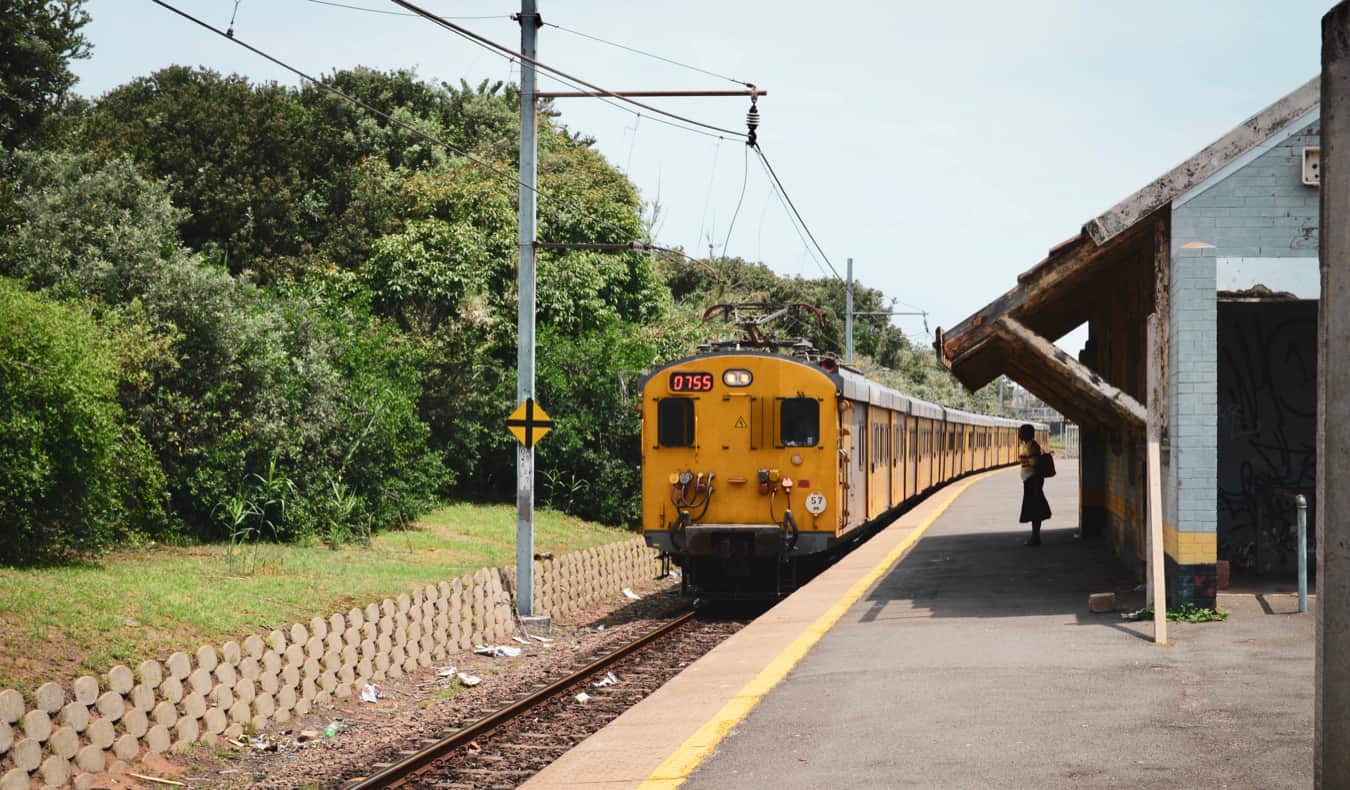
South Africa has a lot of train tracks, however, most aren’t in use as the population has increasingly come to rely on the extensive highway system. Essentially, just the major cities in South Africa are accessible by train.
Shosholoza Meyl (South African Railways) has long-distance trains that serve Cape Town, Port Elizabeth, Bloemfontein, Durban, East London, Johannesburg, Queenstown, and East London. They’re comfortable and safe and make various stops at smaller towns along the way.
The fares are some of the cheapest available for any mode of transport in South Africa, running as low as 525 ZAR ($30 USD) for a sleeper berth from Johannesburg to Durban. They’re safe, comfortable, and one of the best-kept secrets of traveling South Africa.
For those who are interested some luxury, the famous Blue Train, which runs from Pretoria to Cape Town, costs 26,000 ZAR ($1,500 USD) for a luxury double berth. The trip lasts a few days and includes wine, cigars, great food, and comfortable compartments. It’s the fanciest way to see the country!
How to Stay Safe in South Africa
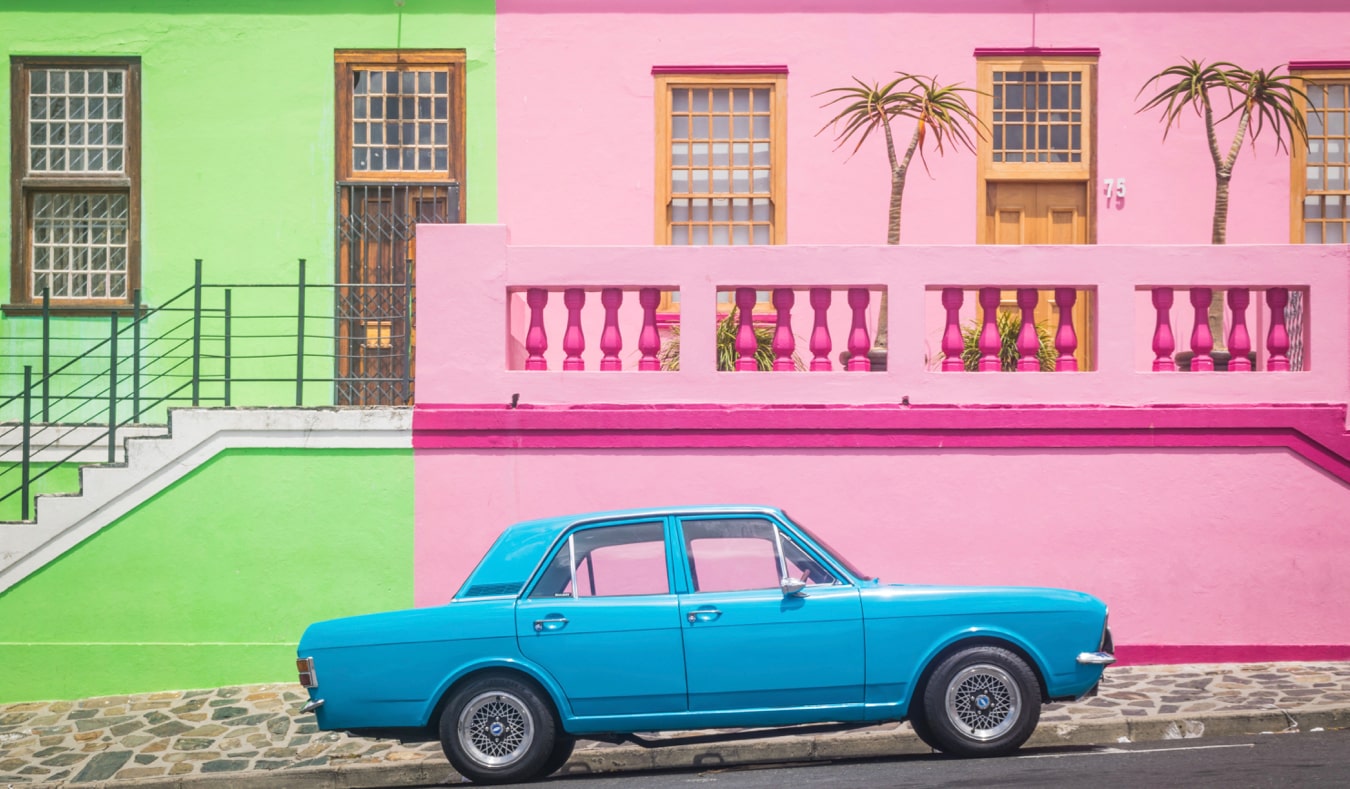
One last issue of safety: South Africa isn’t more dangerous for a solo traveler than your typical big city in the United States. I was surprised to see that the murder rate of Detroit is actually significantly higher than that of South Africa.
That said, muggings are still common, especially amongst tourists and particularly in Cape Town and Johannesburg. Given the high level of rape and theft in South Africa, I wouldn’t advise hitchhiking (which is something I usually love to do!).
Additionally, one shouldn’t walk around alone at night, be flashy, or leave things showing in the car, but much of that is true around the world.
There are numerous ways to get around South Africa, and after testing several methods, I think the best is a car rental. Nothing else offers the flexibility, convenience, and reasonable price tag. If a car rental isn’t your thing and you’re solo, I’d consider the Baz Bus.
That said, regardless of which of the above transport methods you choose, South Africa is easy and relatively affordable to travel around, whether you’re solo, in a group, or a duo.
Kristin Addis is a solo female travel expert who inspires women to travel the world in an authentic and adventurous way. A former investment banker who sold everything and left California in 2012, Kristin has solo traveled the world for over eight years, covering every continent (except for Antarctica, but it’s on her list). You can find more of her work at Be My Travel Muse or on Instagram and Facebook.
Book Your Trip to South Africa: Logistical Tips and Tricks
Book Your Flight
Use Skyscanner or Momondo to find a cheap flight. They are my two favorite search engines because they search websites and airlines around the globe so you always know no stone is left unturned. Start with Skyscanner first though because they have the biggest reach!
Book Your Accommodation
You can book your hostel with Hostelworld as they have the biggest inventory and best deals. If you want to stay somewhere other than a hostel, use Booking.com as they consistently return the cheapest rates for guesthouses and cheap hotels.
Don’t Forget Travel Insurance
Travel insurance will protect you against illness, injury, theft, and cancellations. It’s comprehensive protection in case anything goes wrong. I never go on a trip without it as I’ve had to use it many times in the past. My favorite companies that offer the best service and value are:
-
(for everyone below 70) (for those over 70) (for additional repatriation coverage)
Looking for the Best Companies to Save Money With?
Check out my resource page for the best companies to use when you travel. I list all the ones I use to save money when I’m on the road. They will save you money when you travel too.
Want More Information on South Africa?
Be sure to visit our robust destination guide to South Africa for even more planning tips!
How to Stay Safe in South Africa

Last Updated: 10/18/22 | October 18th, 2022
Each month, Kristin Addis from Be My Travel Muse writes a guest column featuring tips and advice on solo female travel. It’s an important topic I can’t adequately cover, so I brought in an expert to share her advice. Here, she’s sharing safety tips for South Africa.
At the dinner table back home in California, I asked my friends to name the first thing that came to their minds when they thought about South Africa. I expected them to say things like “elephants!” and “Lion King!” but instead “Ebola,” “soccer,” and “crime” were among the responses I got.
When I told them that I would be traveling there by myself, they were horrified at the thought.
This is proof to me that much is misunderstood — or at the very least generalized and oversimplified — about this country, which has a lot more going for it than some misplaced Ebola rumors and a World Cup that took place there a few years ago.
South Africa is huge and diverse, spanning 471,000 square miles, with a population of over 59 million that speaks 11 official languages. Why does it have such a bad rap?
In this post, I’ll share my tips on how to stay safe during your visit because, contrary to popular belief, South Africa is a perfectly safe place to travel as long as you follow a few basic steps.
Table of Contents
Why Does South Africa Have a Bad Reputation?

South Africa is the first country I’ve visited where the locals have repeatedly told me that muggings and violent crime are a big problem. According to those I’ve spoken with, they’re also on the rise.
While this may seem off-putting, keep in mind that the homicide rate in a city like Cape Town is on par with US cities like Baltimore and St. Louis.
For comparison, 4 out of the top 5 cities in the world with the highest homicide rates are in Mexico — yet Americans still flock there every year on vacation.
Moreover, the homicide rate has gone down since apartheid ended, and there have been fewer murders in Cape Town’s safest neighborhoods (V&A Waterfront, Camps Bay, Gardens, Sea Point, Green Point, and De Waterkant), where tourists tend to flock. It’s not a war zone — far from it. Most violent crime takes place between people who know each other in dangerous neighborhoods that tourists don’t tend to visit.
As in many countries, tourists in South Africa are mainly the targets of petty crime. These are often crimes of opportunity as well.
Though there are political, economic, and racial struggles, South Africa is not nearly as “scary” or “dangerous” as it is often perceived.
How to Stay Safe in South Africa
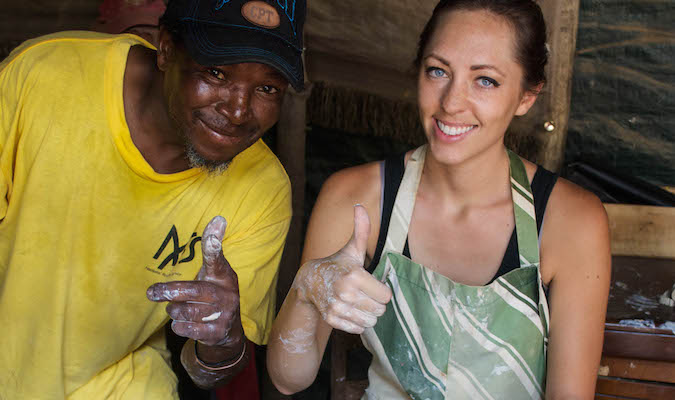
After spending nine weeks solo traveling through the country, I did find that I had to take more precautions than I do in Southeast Asia or Germany, but the dangers are not all that different from the big cities back home in the United States or other parts of Europe.
While much of staying safe means following the safety rules you obey back home and following your intuition, here are 7 tips to make sure you have a safe and fun trip to South Africa:
1. Know Where Not to Go
Though crime rates are higher in the townships (settlements established during apartheid for forced racial segregation), staying safe does not mean staying out of them altogether. Some of my favorite memories, such as drinks shared around an unlicensed bar, little kids swinging from my arms, and delicious streetside BBQ, all came from my time spent in the townships.
They’re friendly places. They’re just better visited during daylight hours and with a local guide who lives there and knows the lay of the land. This can be organized through your guesthouse or by seeking information from the tourism board.
Soweto in Johannesburg, for example, has walking, cycling, and even bus tours. It welcomes tourists thanks to the benefits of the money they bring in.
2. Don’t Walk at Night
People tend to become targets by walking in cities rather than taking private or public transportation. Even in a group, pickpocketing can occur, but it’s much more likely to happen when walking alone. Avoid walking alone when possible, especially at night.
3. Don’t be Flashy
Wearing jewelry or designer clothing and taking your phone/camera out in public are all great ways to become a target. Bringing expensive jewelry on vacation is not advisable in the first place, but if you do have pricey things like a camera, keep them hidden. And never keep your passport on you.
The more likely it seems that you’re a foreigner who does not know the lay of the land, the more likely you are to become a target for petty theft. Put the phone away and take it out when safely at home or in a café.
4. Lock Your Car Doors and Keep Valuables Hidden
Other common occurrences, especially in big cities like Cape Town and Johannesburg, are car break-ins and carjackings. Avoid these by keeping the doors locked while driving and keeping absolutely everything — sunglasses, phones, bags, and wallets — out of sight. Nothing of value or anything that seems like it could possibly be valuable, including cheap sunglasses, should be visible when the car is parked and unattended.
In the big cities, unlicensed parking attendants are always around to “watch” your car for you, so throw them a tip now and then for keeping an eye out for your car when you’re not around.
5. Have a Dummy Wallet
Though I believe I stayed safe mostly because I didn’t walk around much, there were a few times when I got tired of being scared and walked short distances instead of taking a taxi or a bus. To protect my belongings, I carried a “dummy wallet” that had just a few canceled credit cards and a bit of petty cash in it, while I hid everything else in my shoe or, honestly, in my bra.
If anyone approached me, I planned to freely hand over my bag so that the thief had something to take while the rest was safely hidden. It never came down to this, as I never experienced any crime firsthand, but I felt ready should a thief approach.
6. Be Aware and Listen to Your Instincts
It also helps to be hyper-aware. If you must walk, take in your surroundings, look in every direction and make a point of letting everyone know that you’re paying attention by keeping your head up and looking alert. Try never to be alone on a sidewalk, and get as close to families as possible.
I once walked down a quiet side street in the up-and-coming Woodstock area of Cape Town and, realizing nobody was around, immediately turned around and went back to the busy main road. It felt sketchy, and my alarm bells sounded.
If someone appeared to be paying me too much attention, I’d look that person in the eye and say “hello” or step into a store with other people inside.
7. Use Common Sense
I thought about my safety precautions in South Africa compared to what I would do at home. I certainly wouldn’t walk around most parts of Los Angeles or other major American cities alone and wouldn’t even consider it at night, particularly not with my phone out.
I guard my bag like a hound in most major European cities due to the incredibly high pickpocketing rates. It really wasn’t so different in South Africa.
8. Buy travel insurance – Travel insurance is there for you should something go wrong. It’s just a few dollars per day (often less) and is worth the peace of mind. Here are some suggested companies to help you get started.
Is South Africa safe for tourists?
While you do need to take necessary precautions here, South Africa is indeed safe for tourists to visit. Most violent crime occurs between people that know each other, and the places that tourists tend to stay in are the safest areas in the country.
Is South Africa safe for women?
While high rape statistics can be (understandably) offputting for female travelers, again, most crimes occur between people who know each other. I visited South Africa for 9 weeks as a solo female traveler and, following the tips above, was perfectly fine.
Are the taxis safe in South Africa?
Taxis are generally safe here. It’s best to pre-book and pre-pay for rides, so ask the hostel/guesthouse staff for their recommendations on reputable companies as well as how much a ride should be. Uber also exists throughout the country and is a good option for getting around safely. Never use the mini-bus taxis that locals use as they can be notoriously unsafe.
Is the tap water safe in South Africa?
The tap water here is generally not safe outside of urban areas so bring a reusable water bottle with a filter to save money and reduce your plastic use. LifeStraw is my go-to brand as their bottles have built-in filters to ensure your water is always clean and safe.
It used to be that I couldn’t answer the question when asked about my favorite country I’ve been to. Now, I often reply South Africa.
Though statistics can make it seem like a scary place, in reality I spent much more time enjoying myself than ever worrying about being robbed or becoming a victim of violent crime. While safety should always be foremost in your mind, South Africa did not feel scary, uncomfortable, or dangerous.
Sure, you’ll need to take more precautions than you would in, say, Thailand, but it’s still perfectly safe as long as you use common sense and follow the tips above.
Kristin Addis is a solo female travel expert who inspires women to travel the world in an authentic and adventurous way. A former investment banker who sold all of her belongings and left California in 2012, Kristin has solo traveled the world for over ever since. You can find more of her musings at Be My Travel Muse or on Instagram and Facebook.
Book Your Trip to South Africa: Logistical Tips and Tricks
Book Your Flight
Use Skyscanner to find a cheap flight. They are my favorite search engine because they search websites and airlines around the globe so you always know no stone is left unturned!
Book Your Accommodation
You can book your hostel with Hostelworld as they have the biggest inventory and best deals. If you want to stay somewhere other than a hostel, use Booking.com as they consistently return the cheapest rates for guesthouses and cheap hotels.
Don’t Forget Travel Insurance
Travel insurance will protect you against illness, injury, theft, and cancellations. It’s comprehensive protection in case anything goes wrong. I never go on a trip without it as I’ve had to use it many times in the past. My favorite companies that offer the best service and value are:
-
(best for everyone) (for those over 70) (for additional evacuation coverage)
Looking for the Best Companies to Save Money With?
Check out my resource page for the best companies to use when you travel. I list all the ones I use to save money when I’m on the road. They will save you money when you travel too.
Want More Information on South Africa?
Be sure to visit our robust destination guide to South Africa for even more planning tips!
How to Save Water in South Africa – The Ultimate Guide

Water is a scarce resource, not only in South Africa, but in many parts of the world. While residents in Johannesburg seek shelter from the rain, Capetonians are forced to make sure that water consumption is at a low. With the current drought crisis in the Western Cape and Level 6B water restrictions still in place , the need to save water and avoid Day Zero is still prevalent.
To help conserve this precious resource we’ve done all the research you need to save water in every kind of environment. Every precious drop counts and it’s important that every individual and organisation learns how to save water in the most effective way possible.
Table of Contents
- Why you should save water
- How to save water in your home
- How to save water in your business or organisation
- How to save water in your garden
- How to save water with your lifestyle choices
- Water scarcity in the world
“To a thirsty man, a drop of water is worth more than a sack of gold.”
1. Why You Should Save Water
Water is life. Not only do you need water to survive but it is an essential resource in all matter. 71% of earth is covered with water but only 1% of it is drinkable . As water is necessary for all life and especially for human survival, the importance of this resource is clear.
With climate change, the weather patterns in the world have changed and South Africa’s catchment area has seen a severe scarcity of water, according to the Department of Water and Sanitation at the City of Cape Town.
The positive news is that water levels in the Western Cape, where the drought has been rife, are rising. Unfortunately measures still need to be taken to keep the dam levels at above constant and fill them to as close to 100% as possible.

According to Africacheck , the following statistics showcase the current water situation in South Africa.
- Roughly 88 % of SA households have access to water.
- There is piped water in less than 50% of the homes.
- South Africa has less water per person than Botswana & Namibia.
- South Africa is the 39th ‘driest’ country in the world.
The above video is produced by the Water Rooms , watch it to find out where and how much freshwater is available on planet earth.
Everyone has a role to play to ensure that water is used in a sustainable manner.
General Quick Tips on How to Save Water
- Monitor how much water you are consuming .
- Find and fix leaks. The DropDrop App can help you.
- Use alternative water resources , like collecting rain water or using grey water .
- Use hand sanitiser. But be warned – use it (and soap) properly or risk creating antibacterial-resistance, just like not finishing your antibiotics script.
2. How to Save Water in Your Home
Starting at home, it’s important to realise how much water you can actually save. For each area of your home you are able to reduce a significant amount of water just by using effective techniques. To make the water saving journey as simple as possible, find water saving techniques for your home below.

Existing Bathrooms:
- Take shorter showers. T urn the shower on, wet yourself, turn it off. Soap yourself, rinse, and you’re done. Showering once a day and filling up less water in your bath can save a lot of water.
- Use a basin in the shower. Collect all the water you shower with and use this to flush your toilet, either via the cistern or straight into the bowl.
- Wash your hair less often . With training and a few uncomfortable days your hair can adapt to being washed less often.
- Shave with a small container of water. There’s no need to keep water running this way when shaving.
- Reduce the amount of water you use when flushing the toilet. Lift the toilet handle immediately when flushing and only flush if needed. By doing this you reduce the amount of water running down the drain.
- Put a brick or bottle in the cistern of the toilet. This allows the cistern to fill up with less water.
- If you have a baby that cannot stand up in the shower, wash the baby in a basin or use ababy dam.
- Change your shower head to a water saving alternative
- Collect steam/moisture with a dehumidifier. The water collected can be used as a source of greywater.

New Bathrooms:
- Fit water saving shower heads . A single temperature lever (instead of two taps) makes taking a shorter shower even easier – consider this when installing a shower.
Some alternative shower head solutions you can consider are:
Some alternative water saving nozzles you can consider in a new or existing bathroom are:
Some alternative water saving toilets you can consider are:
Existing Kitchens:
- Put basins in your sinks and d on’t leave water running when washing dishes. The basin can be used for freshwater to rinse vegetables or dishes.
- Boil water when washing dishes. Very hot water cleans your dishes more efficiently, which means you won’t need as much water or soap. It’s wise to leave the greasiest dishes for last.
- Use one-pot recipes when cooking meals. Often, using more than one pot is unnecessary when cooking.
- Steam your vegetables instead of boiling them. By doing this you are also cooking your vegetables in a healthier way.
- Scrape and wipe your plates clean before putting them in the dishwasher so you can use a shorter cycle.
- Put a full load of washing into the washing machine and dishwasher.
- Use paper cups and plates. Remember, plastic is extremely bad for the environment.

New Kitchens:
- Fit water saving nozzles on the kitchen sinks.
Some alternative water saving nozzles you can consider in new and existing kitchens are:
3. How to Save Water in Your Business or Organisation
Water is needed for everything we produce and consume, which directly affects businesses. With this in mind, the impact organisations can make is huge, not only in Cape Town but in the entire world.
Businesses have an important role to play in the water conservation journey and can influence individuals, communities and other businesses to save water efficiently. We’ve noted the following water saving techniques to help save water efficiently within your business.

Tops Ways to Save Water in Your Business:
Existing Office Space:
- Educate your staff on the importance of saving water . Make sure they understand how to save water both at home and at work. A good initiative is to start a water saving project within the organisation.
- Do regular water saving audits. This will allow the organisation to monitor how much water is being used and which areas of the organisation are using more water.
- Use hand sanitizer in bathrooms.
- Flush toilets only when necessary.
- When cleaning office premises, don’t use water over excessively.
- Use a pool cover if the organisation has a pool.
- Use a product like LooMe or PooPourri to keep smells down. Alternatively use shaving foam in the cistern so you don’t need to flush so often.
- Exchange the toilets for water efficient alternatives.
Quick Fact: Drink less coffee! “About 18 900 litres of water is needed to produce 1 kg of roasted coffee. For a standard cup of coffee, one needs about 7 g of roasted coffee, so that a cup of coffee uses about 130 litres of water.” ( Source: City of Cape Town Water Conservation )

New Office Space:
- Fit water saving taps or fit existing taps with aerators.
Some alternative water saving nozzles you can consider in new or existing office spaces are:
Some alternative water saving toilets you can consider are:
4. How to Save Water in Your Garden
Plants also need water to survive, but it’s possible to reduce the amount of water used to keep them healthy. Saving water in the garden is just as important as saving water at home or at your business. 70% of households with gardens use up to 46% of their water for gardening. That’s a lot. We’ve noted several water saving techniques you can use to save water in the garden below.

Existing Gardens:
- Plant succulents and other water-wise plants. The best plants will most probably be those that naturally occur in the area where you live, as they will be adapted to the local quantity of rainfall and shouldn’t need your extra assistance. Here’s a list of lovely water wise plants.
- Remove invasive and water hungry plant species. Check that none of the plants in your garden are water hungry species such as invasive alien Pine trees, Eucalyptus/Gums, Wattles and Australian Acacias and Jacaranda trees.
Fact: 1,44 billion litres of water is lost to invasive alien plants nationally, which could essentially sustain 3.38 million households with four people living for one year or 120,000 HA of cropland to increase food production (Source: World Wildlife Fund )

- Spread wood chippings or mulch in your garden beds. This technique will reduce evaporation from the soil and prevent the growth of weeds. Plants that provide ground cover can also serve this function.
- Take out your lawn. Lawns are water hungry and can be swapped for much nicer alternatives. Some succulents do this job excellently and are even nice to walk on when fully established.
- Wash your car on your lawn.
- Ask your local nursery for indigenous and water wise ground covering plants. that can replace a lawn.
- Indoor plants can benefit from living in your bathroom , where there will be more moisture in the air. Some may need more light than your bathroom offers so keep an eye on the plant’s health.
- Cover your vegetable garden with a shade cloth. This can deter pets while reducing evaporation.
- Consult a local landscaper to help you plant a waterwise garden.
To find out which plants grow naturally in your area, check out SANBI’s search tool . Click your rainfall region and the “drought tolerant” checkbox, as well as other factors about your garden (the amount of sunlight for example). The search tool will then generate a list of plants that would suit your garden.
New Gardens:
- Invest in agreywater system .
- Invest in a water tank and connect all your gutters to it . If the tank fills up and you have a swimming pool, the overflow water could go into that. Your water tank can serve as emergency drinking water (when filtered) or be used in the toilet and garden.
- Use a drip irrigation system, instead of watering with a hose. This method slowly drips water and means that a lot less water is lost to evaporation.

Existing Swimming Pools:
- Turn off the automatic fill-up in your swimming pool. Apart from saving water, a continually dropping water level will also alert you to leaks in the system.
- Make sure you have a swimming pool cover to reduce the speed of evaporation of water. This will make a big difference to your water consumption.
- Convert your swimming pool to an underground water tank . If you only swim a few times per summer, is the water consumption really worth it? A gym membership may offer a warmer alternative if it’s exercise you’re after.
- Install a backwash tank. A backwash tank holds your pool’s backwash water and releases it back into the pool, instead of letting it go to waste.
5. How to Save Water with Your Lifestyle Choices

Everything we use and eat has a water footprint. It’s possible for us to save water just by adjusting our lifestyle. According to the Water Footprint Network , ‘the water footprint is a measure of humanity’s appropriation of fresh water in volumes of water consumed and/or polluted.’ For example, leaving a mouthful of steak on your plate is equivalent to running your dishwasher 22 times. This is due to the fact that water is needed to produce the crops, which are fed to the cattle and the cattle then lands on your plate.
Water is needed for every aspect of the journey. Below are a few ways you can save water by changing up certain lifestyle choices.
- Reduce your meat and dairy intake. Beef has the greatest “water footprint” so cutting this out of your diet can save your country water. Only 3% of an individual’s water footprint is household use, whereas 73% comes from our diet and the food we eat.
“It takes three times more water to produce milk than vegetables, ten times more water to produce eggs, fourteen times more water to produce chicken meat, nineteen times more water to produce pork, and forty eight times more water to produce beef than vegetables.”
- Be mindful of the products you buy. When shopping for goods, reduce the amount of plastic you buy. Instead use paper cups, paper plates and buy food without the plastic wrapping where you can.
6. Water Scarcity in the World
Many places around the world are experiencing drought and water scarcity. People are living with less water than they need. According to the World Wildlife Fund , roughly 1,1 billion people still don’t have access to water. That’s a lot of people. And despite the data, many people still don’t know how to use water sustainably.
Water affects everything: education, health, food and security. There are many examples of vulnerable cities facing water crises , such as Beijing, Cairo, Sao Paulo, Mexico City, Istanbul, Lahore and Bangalore.
Many of the water systems that keep ecosystems and the world’s population alive are running dry or becoming polluted. An important strategy around the world has become the re-use of wastewater .
With this strategy individuals are able to recover water, nutrients, or energy. In turn countries are using wastewater for irrigation – which represents 7% of irrigated land in developing countries.
We’re in a water crisis. The story is similar everywhere and because of this, by 2025, two-thirds of the world’s population may face water shortages. Due to the water shortages, there are warnings of conflict and mass migration, which some experts say is already happening in Syria.

In a nutshell here’s why water conservation is key :
- Fresh water is scarce around the world.
- Humans need water to survive.
- A large amount of water is used to irrigate farmland for food production. The farming industry in South Africa are the leading direct users of water , consuming roughly 66% of water in South Africa.
- Water is essential for manufacturing (especially in heavy industries which require a lot of water as a power source or for cooling).
- Conserving water can save energy. To pump water and to use the sewage system, energy is required. By saving water you can reduce your carbon footprint and the water bill.
New technologies are emerging around us every day and innovative minds are working together to come up with new water saving solutions . With the severity of the water crisis it’s crucial to start thinking of long-term solutions rather than short term gains.
One area which is experiencing a lot of interest and innovation is desalination , known as turning saltwater into drinking water. Added to that there are also many nifty water saving devices which are being sold on the market.
The power of innovation and technology can help reduce the amount of water we use in our day to day life.
Water scarcity and drought however, has become a frequent phenomenon in many regions of the earth and it’s crucial to continue saving water. Safe and readily available water is necessary for the general health of humans.
A good amount of rainfall won’t solve the problem , since it takes between 500 and 1 300 years to fill an aquifer. We need to all take action today.
Everyone needs to join the conservation train, even if it only means implementing a few water saving techniques.
Source https://www.nomadicmatt.com/travel-blogs/how-to-travel-around-south-africa/
Source https://www.nomadicmatt.com/travel-blogs/how-to-stay-safe-in-south-africa/
Source https://www.swsp.co.za/blog/how-to-save-water-in-south-africa-the-ultimate-guide/
